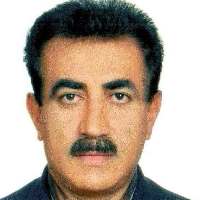Natural Production assessment of Azad Sanandaj reservoir to produce fish
Author(s):
Article Type:
Research/Original Article (دارای رتبه معتبر)
Abstract:
The aim of this research was to study the biological parameters, primary and secondary production assessments and fish production capacity in Azad Sanandaj reservoir. In this study, planktonic and macro invertebrates accompanied with chlorophyll a measurements were conducted in one year trial from June 2015 to June 2016. Phytoplankton were gathered with water bottle sampler in three layers; surface, mid and near-bottom layers, zooplankton were collected by plankton net, determining the initial production capacity in the reservoir by measuring the chlorophyll content and studying its macrobenthos by bottom grab sampler to investigate episodes and infusions. Data showed that chlorophyll a concentration was 3.5±0.5 mg.m2; the highest mean was in winter with 8.8±1.4 mg.m2 and its lowest average in summer with 0.6 ± 1.0 mg.m2. Fish production capacity, based on the primary production (328g.m3 with 168 g.m3 dry weight) was estimated of 218 kg/hectare. The composition and species diversity of phytoplankton showed that 54 species were identified in the Azad Sanandaj reservoir. In this study, six groups of phytoplankton; Bacillariophyta, Chrysophyta, Pyrophyta, Cyanophyta, Chlorophyta and Euglenophyta were identified with 20, 1, 9, 6, 16, and 2 species, respectively. Also, the annual average of phytoplankton was 13.4±2.10 ind.m3 and 7.7±3.3 mg.m3. Zooplankton species composition was 25 species belonged to the three groups; Copepods, Cladocera and Rotatoria, the last with 18 species dominant throughout the year. The average zooplankton abundance was recorded with 8333±20658 ind.m3. The macrobenthos in Azad Sanandaj reservoir was belonged to only one group, Oligochaeta, its average abundance and biomass were 1145.5±847 ind.m2 and 4.1±2.8 g.m2. The findings of this research indicated oligotrophic and oligomesotrophic of the reservoir in which it seems to be changed into eutotroph due to increase of aquaculture activity in future. According to the primary production, the lake can produce 222 kg of fish.
Keywords:
Language:
Persian
Published:
Journal of Aquaculture Development, Volume:12 Issue: 4, 2019
Pages:
29 to 49
https://magiran.com/p1947073
مقالات دیگری از این نویسنده (گان)
-
Fish species diversity, distribution and abundance in the Tajen river (Mazandaran province)
Mohammadali Afraei Bandpei *, Mehdi Naderi Jelodar, Keyvan Abbasi, Abolghasem Roohi
Journal of Utilization and Cultivation of Aquatics, -
Study of biodiversity, frequency and biomass of macrobenthos in the southern coastal of the Caspian Sea
Mohammad Ali Afraei Bandpei *, Matin Shakoori, Abolghasem Roohi, Hassan Nasrollahzadeh Saravi, Mehdi Naderi Jolodar, Iraj Rajabi
Journal of Animal Environment,


